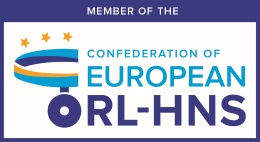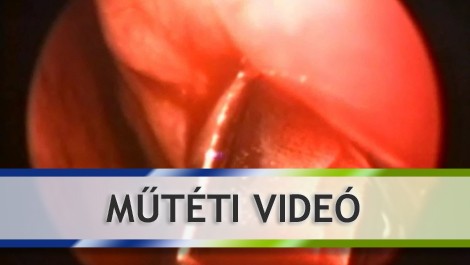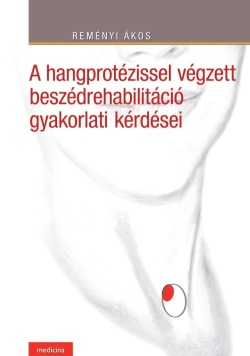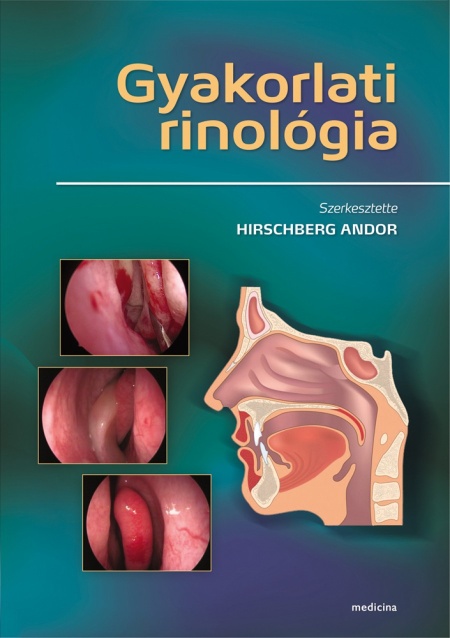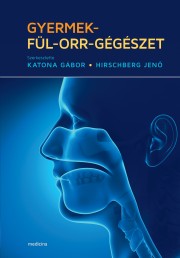Összefoglaló
Az elülső/hátsó commissurát, a subglottist, a gyűrűporcot vagy a cricoarytenoid ízületet infiltráló, dominálóan egyoldali, előrehaladott hangajaktumorok onkológiai sebészete és rekonstrukciója igen vitatott terület. Az onkológiai szempontból biztonságos parciális reszekciók alkalmazását gyakran gátolják a rekonstrukciós módszerek technikai korlátai, elkerülhetetlenné téve a teljes gégeeltávolítást.
Egy 52 éves férfi betegnél a jobb oldali hangajak nagy kiterjedésű, az elülső commissurát, részben az ellenoldalt és a subglottist is involváló laphámkarcinómája miatt kiterjesztett vertikális hemilaryngectomiát végeztünk. A keletkezett szövethiány pótlására lokális trachealebenyt használtunk fel rotációs crico-thyrotracheopexia során. A funkcionális eredményeket a légzés, a nyelés és a hangképzés tekintetében objektív és szubjektív tesztekkel értékeltük a 6. posztoperatív hónapban. A szövettani vizsgálat tumormentes reszekciós széleket írt le. A definitív dekanülálás a műtét utáni 7. napon sikeresen kivitelezhető volt. A beteg légzése és nyelési funkciója megfelelőnek, hangminősége szociálisan elfogadhatónak bizonyult. A 62 hónapos utánkövetési idő alatt tumorrecidíva nem igazolódott.
A rotációs crico-thyrotracheopexia, mint egylépcsős rekonstrukciós technika, jól alkalmazható módszer nagyméretű szövethiányok pótlására előrehaladott, dominálóan féloldali gégetumorok esetén, ahol az onkológiai biztonság bizonyos kritikus struktúrák tumoros infiltráltsága miatt kiterjesztett parciális gégereszekciót követel meg, elkerülhetővé téve ezzel a teljes gégeeltávolítást.
Kulcsszavak
glotticus tumor, kiterjesztett vertikális hemilaryngectomia, rotációs crico-thyrotracheopexia, tracheagraft
Extended partial laryngectomy with function-preserving rotational crico-thyrotracheopexy: a case report
Summary
The surgical oncology and reconstruction of advanced, predominantly unilateral vocal fold tumors that infiltrate the anterior/posterior commissure, subglottis, cricoid cartilage, or cricoarytenoid joint is a highly debated area. The application of oncologically safe partial resections is often hindered by the technical limitations of reconstruction methods, making total laryngectomy inevitable.
In a 52-year-old male patient, we performed an extended vertical hemilaryngectomy due to a large squamous cell carcinoma of the right vocal fold, involving the anterior commissure, partially the contralateral side, and the subglottis. To replace the resulting tissue deficit, a local tracheal flap was used during rotational crico-thyrotracheopexy. Functional outcomes in terms of breathing, swallowing, and phonation were evaluated with objective and subjective tests in the 6th postoperative month. Histopathological examination reported tumor-free resection margins. Definitive decannulation was successfully performed on the 7th postoperative day. The patient’s respiratory and swallowing functions were adequate, and voice quality was socially acceptable. During the 62-month follow-up period, no tumor recurrence was observed.
Rotational crico-thyrotracheopexy, as a one-stage reconstruction technique, is a suitable method for addressing large tissue deficits in advanced, predominantly unilateral laryngeal tumors where oncological safety necessitates extended partial laryngeal resection due to the tumor infiltration of certain critical structures, thus avoiding total laryngectomy.
Keywords
extended vertical hemilaryngectomy, glottic cancer, rotational crico-thyrotracheopexy, tracheal graft





